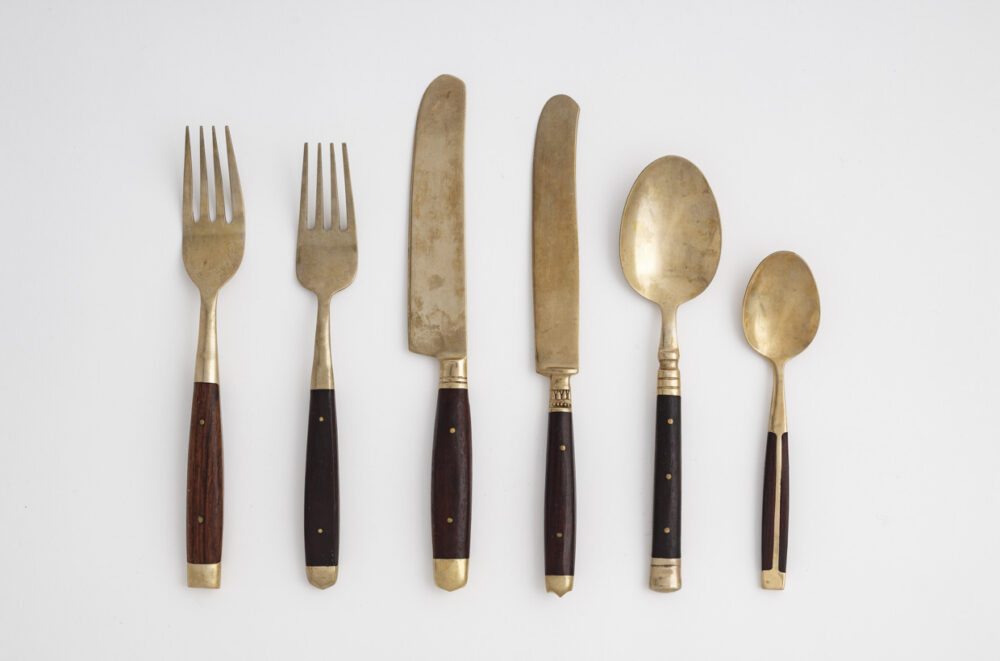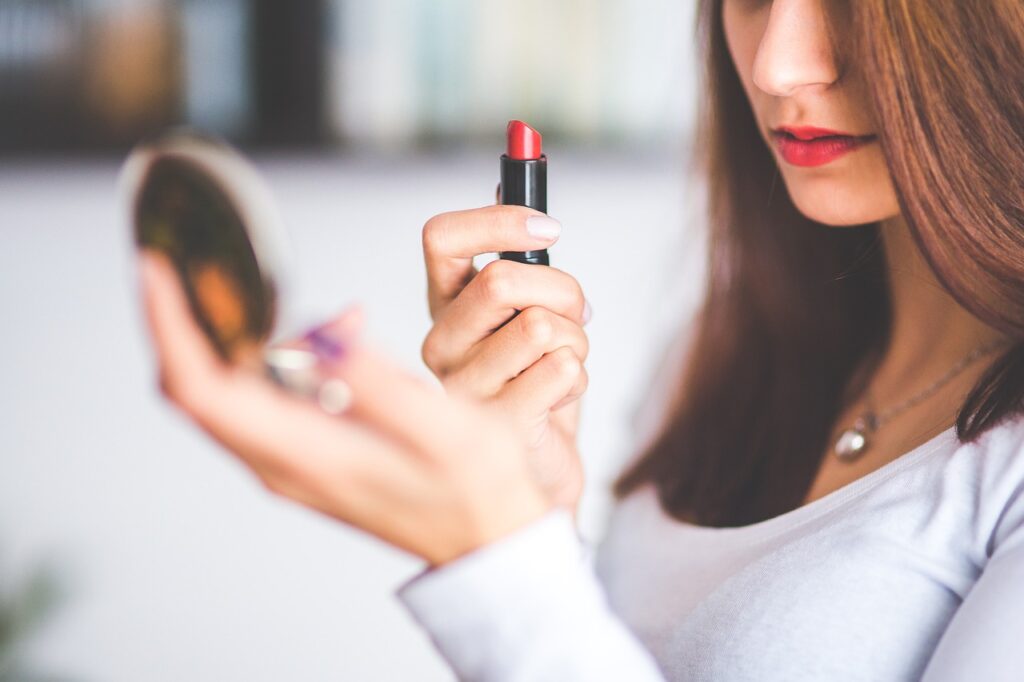The 70’s – a time of bold fashion, groovy music, and distinctive home decor. Among the treasures of this vibrant decade is the bronze cutlery with wooden handles, a true testament to the era’s craftsmanship and style. But what is it about these pieces that continue to captivate us? Is it the warm, inviting glow of bronze or the unique character that each handcrafted handle brings to the table? Or perhaps it’s the stories these sets carry, whispers of lavish dinner parties and intimate family gatherings. Whatever the reason, there’s no denying the allure of these vintage gems.
The Fascination and Concerns of Bronze Flatware
As a professional house man and butler, Clayton Walker from Vancouver, Washington, USA, has seen firsthand the fascination his clients have with bronze flatware. The chic boutique set they initially purchased, however, began to show signs of wear, revealing what appeared to be a stainless steel base metal beneath the bronze. This experience led Clayton to consider guiding his clients towards a vintage set, sparking the question of whether such a set would be dishwasher safe, especially on the very top rack, away from the heat element.
The concern is valid, as the durability and maintenance of vintage items are always a consideration. Ted Mooney, P.E., RET, from Pine Beach, New Jersey, suggests that the issue may not be the heat or agitation of the dishwasher but rather the alkalinity of the detergent, which is typically unsuitable for bronze. He hints at the possibility of finding a mild enough detergent that could be a win-win, as it would not only protect the cutlery but also make Clayton’s hand-washing efforts all the more appreciated.
What about the safety of using bronze flatware? This is a question posed by Guillemette D from Los Angeles, California, who purchased bronze flatware in the ’70s in Thailand. Ted Mooney reassures that bronze, an alloy of tin and copper, should be safe. However, he cautions about the potential presence of harmful elements like mercury, lead, or cadmium, which could be a concern if the details of the flatware’s origin are unknown. This uncertainty is not exclusive to bronze, as it could be said for stainless steel or silver flatware as well.

Experiences and Insights on Vintage Bronze Cutlery
Richard Guise from Lowestoft, U.K., humorously notes that while he wouldn’t hesitate to eat off bronze plates, he wouldn’t recommend using them as Frisbees. This light-hearted comment underscores the idea that while bronze cutlery is suitable for dining, it may not be as resilient to unconventional uses.
The history of nickel-bronze flatware is quite fascinating, as shared by Alfred B from Memphis, Tennessee. The earliest known nickel-bronze flatware was made in Sweden in 1914 by Dirigold, which later became Dirilyte after relocating to the U.S. and undergoing a name change due to the absence of gold in the metal. Dirilyte was sold in the finest jewelry stores and remained in production until 1985. Alfred B’s personal experience with Dirilyte and Siam/Thai flatware, which he uses frequently, speaks to the longevity and quality of these pieces. He also mentions the availability of Dirilyte polish and refinishing services, suggesting that with proper care, these vintage items can indeed last.
Jeanie H from Arkansas adds to the conversation by sharing her encounter with Solid Nickel Bronze Flatware in Bangkok, which she describes as ‘wonderful.’ The set she saw, purchased in the ’70s, came with all the paperwork, indicating a level of craftsmanship and authenticity that is highly sought after by collectors and enthusiasts. The Pattern ‘K’ King Design she mentions is a testament to the intricate designs that were popular during that era.
The use of bronze dishes, or ‘Khamsa,’ in Nepal during the ’70s and ’80s, as recounted by Mathew N from Toronto, Ontario, Canada, provides insight into the traditional use of bronze in daily life. These dishes were hand-forged using sledgehammers and molds, often of stone, and were safe to eat from without the need for tinning, unlike copper and brass cooking pots. Mathew’s detailed description of the tinning process and the durability of these items further supports the notion that bronze cutlery, when made properly, is both safe and long-lasting.
The discussion on the safety and care of bronze flatware is further enriched by the experiences of Janet Young from Tallahassee, Florida, and James McNaughton from Chevy Chase, Maryland, USA. Janet, who owns bronzeware purchased during the Vietnam War, opts to wash her set by hand due to water spotting in the dishwasher and uses bronze cleaner to maintain its shine. James, on the other hand, struggles to restore the shine to his Thai bronze dinnerware, finding that common cleaners like Brasso and copper cleaner are ineffective. Ted Mooney suggests trying Revere copper cleaner for heavy tarnish or power buffing for a mirror-smooth finish, indicating that with the right methods, the original luster of bronze cutlery can be revived.
The question of whether flatware is made of brass or bronze is addressed by Mathew N, who warns against eating off brass due to the potential addition of lead to improve machinability. He advises that if the flatware is heavy and well made, it is likely to be bronze, which is safe for dining. Marcy D from Scottsdale, Arizona, faces this dilemma with her inherited set of heavy, gold-colored flatware. Ted Mooney suggests using an alloy sorter to determine the composition and safety of the set, but ultimately, if it is a thing of beauty, he would use it.
Leslie Hotchkiss from San Rafael, California, expresses concern over her recently purchased vintage Thai flatware sets, which she fears may contain brass or lead. The flatware, characterized by a three-headed elephant on the handles and a finial on top, is heavy and tarnish-resistant. Leslie seeks assurance of their safety and inquires about Thai fabrication methods. In response, another owner of a similar set from the ’60s, who has not used the flatware due to safety concerns, finds it beautiful nonetheless.
The allure of 70’s bronze cutlery with wooden handles lies not only in its aesthetic appeal but also in its potential to withstand the test of time, provided it is cared for properly. While there are valid concerns regarding the safety and maintenance of these vintage pieces, the experiences and advice shared by various individuals suggest that with a little effort and the right knowledge, these treasures from the past can continue to grace our tables with their timeless elegance. Whether for their historical value, intricate designs, or the warm, inviting presence they bring to a meal, 70’s bronze cutlery remains a worthy investment for those who appreciate the charm of yesteryear.
Related posts:
Vintage Bronzeware Flatware From Thailand
All About Pocket Knives
Party On, Silverware





